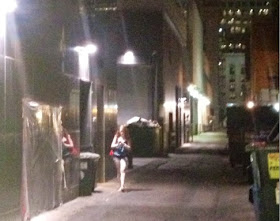 |
| Nobel-prize laureate Malala Yousufzai - Photo Creative Commons by Southbank Center |
Whether Islamist fanatics killing young Muslim girls or fundamentalist Christian ideologues attacking abortion clinics, Malala Yousufzai reminds us political nutcases will always surface. Tragic also is how they are sensationalized in the putrid swamp that passes for contemporary news reporting. That may be as much the fault the media as it is the fault of the extremists themselves.
News reports of violence
The same can be said for stories of murder, rape and violence that find their way into headlines. Is there validity to the claim that by airing such atrocities we raise alarm, show disgust, and shame local authorities into taking action? Does media attention allow us to hear the Yousufzai’s of the world?
Perhaps.
Putting aside for a moment recent blips in crime trends of a few cities, (possibly due to the Recession) new research suggests the trend for worldwide murder, mayhem and violence is actually on the decrease. Yes, things are getting better (though you wouldn't know it from the media)!
This according to a number of respected journalists who rise above the putrid smell of info-tainment, for example Joe Schlesinger’s recent article on CBC titled You do know, right, that the world is getting better?
Steven Pinkers 2007 TED.com presentation “The Decline of Violence”
Schleshinger cites Steven Pinker’s book, The Better Angels of Our Nature. Pinker reveals a dramatic decline in violence rates around the world. The Middle Ages - the so-called Dark Ages - were particularly brutal and violent says Pinker.
He should know. Ever since criminologist Ted Robert Gurr wrote the historical classic Rogues, Rebels and Reformers in the 1970s (showing the same downward trend from ancient times until the crime explosions in the 1960s), few historians have looked so exhaustively at the topic. Pinker has compiled the most comprehensive historical data on homicide to date.
"Even for the 20th century as a whole, with its two world wars, revolutions, genocides and man-made famines, the violent death rate was down to 3 percent…a marked decline from the 15 and 10 percent rates that he documents for prehistoric times and the Middle Ages."
It is left to Malala Yousufzai, a victim of violence, to show us that even in a swamp there are flowers.
